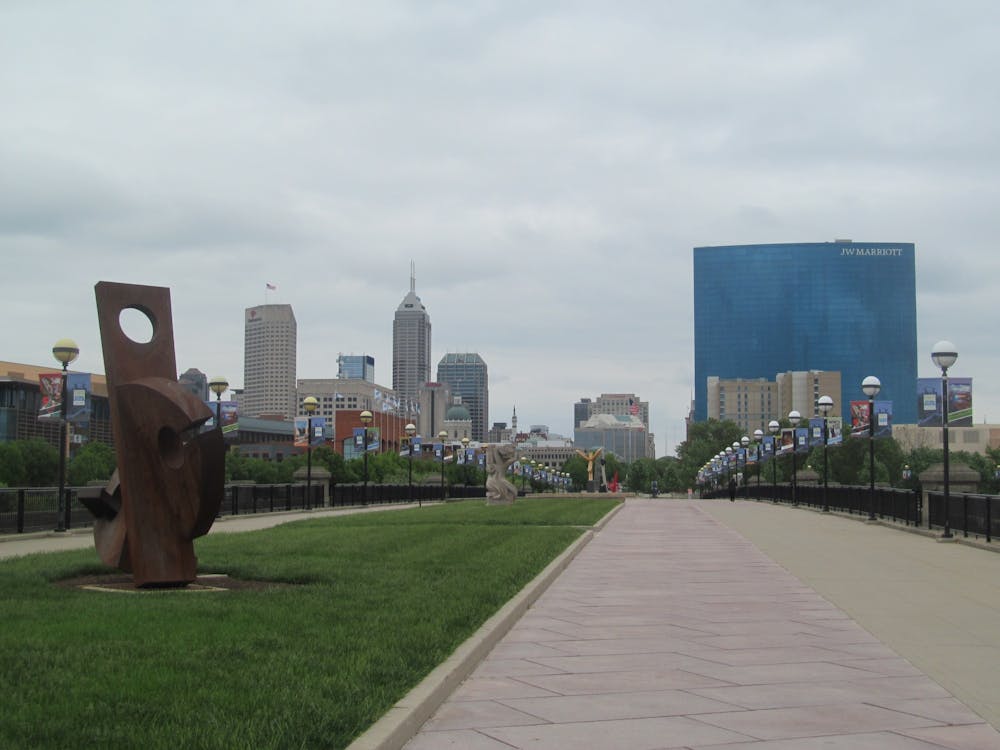Indianapolis’ Indiana Avenue, a historic downtown district, was once the core of Black culture in the city. Throughout the 1900s, an ethnic cleansing took place. It now houses many IU-Purdue University Indianapolis buildings and city infrastructure.
The history often told regarding this district is that the Civil Rights Movement allowed Black communities to move into white neighborhoods. This is not the case. From the 1950s to the 1970s, Black people were forced out of their homes due to property expansions.
Black leadership developed Indiana Avenue when it was a few decades old. By the early 1900s, it was a collection of Black neighborhoods housing immigrants as well. There were Black-owned shops, restaurants and clubs famous for jazz music.
The Black community was a pillar for the city’s economy. Certain figures from the Avenue, such as the first Black American woman millionaire Madam C.J. Walker, left potential for generational wealth. Black dollars were being spent on black businesses and the large amounts of money were benefiting their community. At the same time, white-owned companies utilized the Black community for cheap labor.
Visitors to Indianapolis started to frequent the area for the nightly scene. Clubs were integrated and Black businesses were benefiting from white dollars.
The jazz scene was slowed down through enforced segregation on the Avenue by the Indianapolis government in the 1940s. Because of the many club raids and increased police violence, establishments began shutting down.
As the Black population increased at a rapid rate, IU expanded its medical center. In response to the expansion, nearly 38 acres of neighborhood were declared substandard by the Indianapolis Redevelopment Commission, and the university purchased the land. Residents were forced to relocate.
In the late 1950s, the Indiana government proposed an interstate highway through the middle of Indiana Avenue. Around the same time, IU was looking to build an urban research campus. IUPUI began replacing homes and businesses.
IU moved to take ownership of the large apartment complex Lockefield Gardens in the 1960s. There was defeat and more displacement in response to organized resistance and rioting by the remaining Black residents.
Discover Indiana has their own brief history of the Avenue. They blame this period on expanding job opportunities and housing availability for the Black community. They acknowledge the culture had an incredibly deep impact on the city without taking the blame for its destruction.
Wildstyle Paschall, a writer for New America, grew up in Indianapolis. He writes about the violent displacement along with the deep-rooted effect of the Indiana Avenue community.
“They certainly weren’t bragging about jazz history back then,” Paschall said. “Looks like more gentrification to me.”
The planned renovations of the Avenue eradicated 100 years of Black culture. Many residents could not maintain their wealth after relocation. Black businesses turned to rarity in a place they once flooded. Upwards of 12,000 people were displaced from their homes throughout this period.
The lack of acknowledgment of this historic event to date can be frustrating, especially considering the racial disparities which are still intact. Recent counts show that 54% of Indianapolis’ homeless population is disproportionately Black.
Paschall said he hopes acknowledgment of the Avenue history will dismiss the idea that integration led to the destruction of Black culture.
Ignorance of history leaves the potential to repeat it, and Indianapolis should form plans of reparations instead.
“They can put a plan in place to make sure current Black neighborhoods have an opportunity to thrive,” Paschall said. “What they once called urban renewal, they now call revitalization. They need to protect Black neighborhoods and people.”
CORRECTION: A previous version of this article misstated what currently stands on the Lockefield Gardens site.






